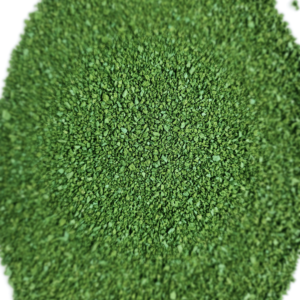
What Are the Ingredients in a Hair Conditioner?
Hair conditioner is an after-shampoo moisturizer that replenishes lost moisture to strands, smooths them to produce a glossy finish and prevents split ends from developing.
Conditioners contain ingredients like lipids, emollients and oils which work to form a barrier that retains moisture while also helping prevent dry strands that come with frequent washing and styling practices.
Proteins
Protein is essential to healthy hair. Unfortunately, its levels can quickly deplete due to styling products and chemical treatments; this can result in dull, strawlike locks with weak structures. Conditioners and leave-in treatments containing protein help restore strength, shine and elasticity by coating or filming each strand to fill any gaps in its cuticle and provide healthy replacements for any lost proteins.
When selecting a protein conditioner, it’s essential that it contains hydrolyzed proteins. This process breaks down protein molecules into smaller, more manageable parts so they can more easily penetrate and absorb into hair strands without creating build-up or weightiness. When searching for suitable conditioners it is recommended that silk, keratin and collagen proteins are present as these products provide maximum benefit and less likelihood of buildup or weight.
These proteins share similar chemical composition with hair strands, making them biomimetic and safe replacement treatments for damaged locks. Furthermore, these proteins fill gaps on hair strands and strengthen them against further damage, providing more natural remedies than artificial methods.
Amino acids found in proteins can repair the cuticle of hair strands, smoothening and lessening brittleness. Furthermore, protein’s ability to hold water means it can moisturize and soften locks; particularly important in cases of dry and brittle locks.
Hair conditioners with protein can benefit all types of hair, but are particularly helpful on fine, chemically treated or coarse locks. However, it’s important to remember that these products shouldn’t replace shampoo and conditioner; rather, they’re meant as treatments in conjunction with these products to bring maximum benefit to your locks.
Himalaya’s Protein Conditioner combines regular and hydrolyzed proteins for ultimate reparative properties on your hair. Infused with aloe vera and bean sprout extracts to stimulate growth while protecting from further damage, this conditioning formula offers long-term damage protection and promotes shine while fostering growth.
Silicones
If you’re on the search for products to keep your hair shiny, soft, frizz-free and manageable, chances are you have come across conditioners formulated with silicones. What you may not realize is that there are various kinds of silicones and knowing which type your product contains can make all the difference in performance on your locks.
According to experts interviewed by Allure, silicones are safe for use and provide immediate aesthetic improvements for your hair: creating a protective film which seals in moisture while keeping humidity away. Because of this feature, silicone products have long been included as anti-frizz and smoothing products.
But silicones can create an unpleasant situation: They form a plastic-like film on your strands that increases weight while blocking other nutrients from penetrating into the shaft and providing nourishment. Furthermore, it may lead to build-up that requires regular clarifying shampooing sessions; otherwise it could eventually form a layer over the hair follicle which leads to dryness and breakage, according to Patel.
Your typical conditioner likely contains water-soluble silicones that dissolve with surfactants (cleaning agents found in most shampoos). But non-water soluble silicones also exist and tend to “stick to the hair surface”, according to Kinky-Curl founder Shelley Davis – leading to dryness and breakage over time.
Both experts concur that silicones should not be completely avoided, yet both advise their avoidance if you have curly or wavy hair. Instead, opt for natural oils such as shea butter, jojoba oil and argan oil which hydrate your scalp and strands while simultaneously providing frizz-free locks without silicone’s drawbacks. Plus these natural oils also supply your locks with antioxidants, vitamins, fatty acids to keep it healthy – not just looking sleek.
Lipids
Hair lipids are an integral component of hair fibre structure and influence its physical-chemical properties. Structural lipids in particular play an essential role as they seal and laminate each cuticle cell surface to stop water evaporation from the cuticle layer. Lipids play an integral role in protecting against damage from outside, acting as a barrier between foreign particles and chemicals entering our cuticle layer and our cuticle itself. Unfortunately, lipids found within hair are regularly exposed to harsh conditions caused by shampooing, environmental pollutants and chemical treatments – stressors which have an adverse impact on their function. Lipids are susceptible to oxidation and degradation, which compromise their function. When washing with surfactants, lipids are lost from the hair surface during routine washings resulting in loss of surface integrity and decreased tensile strength of hair.
Hair contains free fatty acids and cholesterol in abundance, forming a layer on cortical cells to form a monolayer that protects each cuticle cell from its environment, thus improving both tensile strength and flexibility of hair. Furthermore, these lipids play an essential role in isoelectric point regulation as well as ingredient absorption such as cationic polymers, perfumes and surfactants.
No matter their protective and functional roles, lipids found in hair often disappear with exposure to surfactants used for shampooing. Anionic surfactants’ ability to dissolve these lipids depends on factors like their structure, concentration, temperature and agitation; loss of these lipids causes damage which manifests itself by way of brittleness, fragility and dullness of hair strands.
Though hair lipid loss is well documented, relatively little attention has been paid to their replenishment. This is surprising since hair lipids are highly susceptible to external stressors and degradation by oxidation that leads to the production of lipid peroxides (LPOs) which have been found to decrease tensile strength by up to 45%.
To address this problem, hair conditioners must include lipids that are both free and bound to each hair fibre – cholesterol being one such lipid which clings covalently to each fibre’s epicuticle. Other such lipids in hair include ceramides and 18-methyl eicosanoic acid (18-MEA).
Emollients
Conditioners contain various emollients to soften and smooth the hair, helping lubricate cuticle layers and decrease friction between adjacent hair strands, thus decreasing tangling. They also act as protective films against frizz and split ends; natural or synthetic origin emollients often form protective films that do not dissolve easily in water, including butters, oils, silicones, paraffin wax and lanolin emollients as examples of such ingredients.
Emollients are oil-based occlusives used to protect hair and scalp from environmental moisture. Emollients may be made of either natural or synthetic ingredients; some varieties are highly viscous while others remain liquid at room temperature; they may even be combined with humectants for an hydrating effect on the hair.
These ingredients can be found in hair conditioners, deep conditioning treatments and some styling creams, gels, pomades and waxes formulated to be as mild as possible in order to avoid weighing down the hair. Furthermore, these ingredients may also be found in hairsprays and mousses designed for use before blow-drying or heat straightening iron use.
Emollients vary significantly in their chemical makeup depending on their carbon chains’ functional groups and degree of polarity; both aspects will affect how they interact with hair fiber.
Emollients play an essential role in keeping hair moisturized by softening its structure and preventing moisture loss from the shaft, unlike humectants which absorb directly into the shaft of hair follicles. Emollients may also be known as moisturizing ingredients (although the exact definition may differ).
Many hair care products rely on a combination of humectants, emollients and proteins to deeply moisturize the scalp while protecting from environmental conditions. These ingredients are particularly essential for those suffering from dry or damaged locks; in order for best results they should be tailored according to porosity; lighter emollients may work best on thin and medium length hair while thicker locks require heavier products that coat each of their strands completely.






